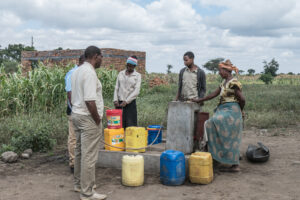In Tanzania, the Nile crocodile is probably best known for its threat to human life. Not only does it snatch villagers from the river banks, but it has even made forays onto the lawns of tourist lodges in search of a tasty meal. In other parts of the world, however, it is known for its high quality, durable leather, which is used in handbags, shoes and belts for customers in Japan, Italy and France.
Once widely hunted for its commercial value, the crocodile became so depleted that it was listed as an endangered species. New laws and trading regulations have helped the Nile crocodile recover, but illegal hunting remains a threat to its viability, as does habitat destruction from irrigation projects and human population expansion.
To benefit both the crocodile and local communities, Alison Leslie from the University of Stellenbosch in South Africa is introducing villagers to captive breeding and crocodile ranching. Capturing and transporting the animals are some of the first lessons taught. Leslie proposes returning some of the captive-bred crocodiles to the wild, while selling the skins from others. The skins can be worth as much as $200 to $300. That substantial sum of money could quickly turn species predation into species preservation in many African countries.
 Environmental News Network
Environmental News Network


